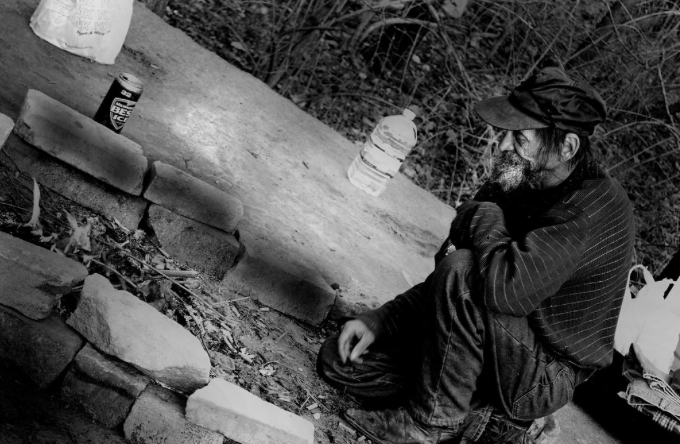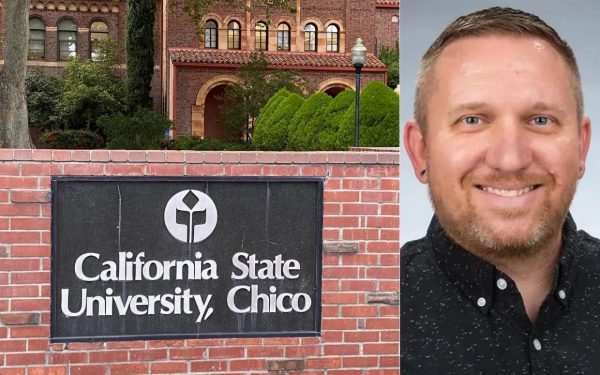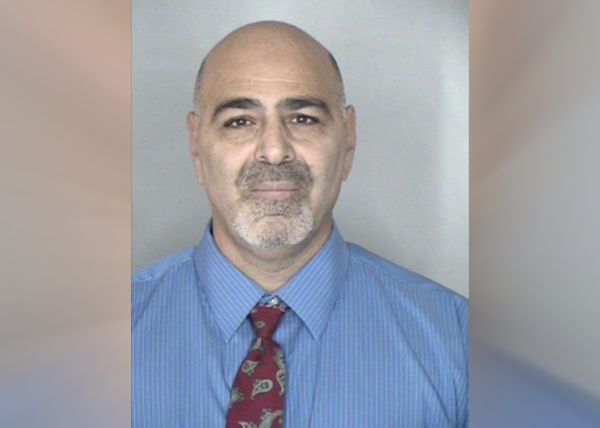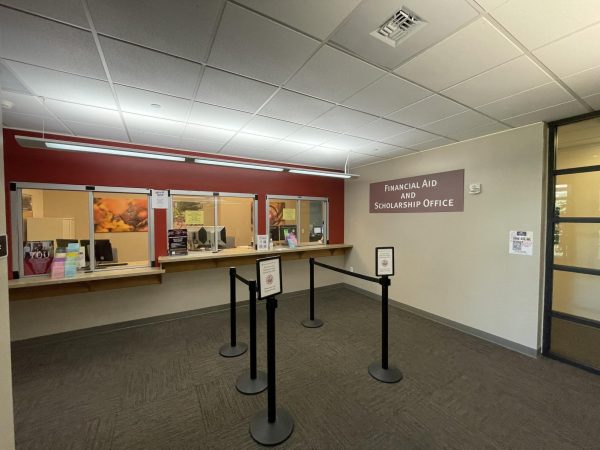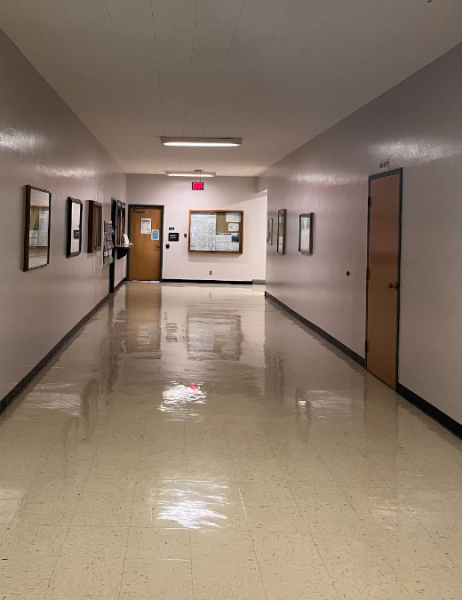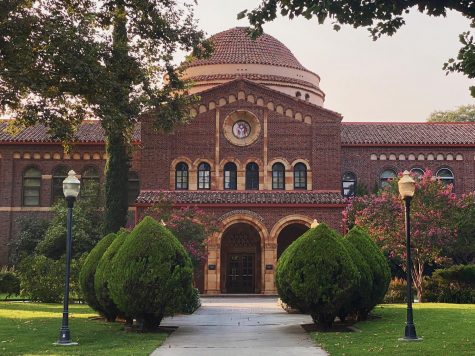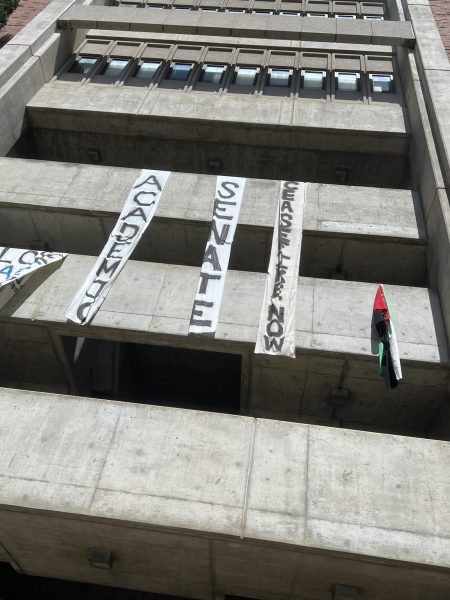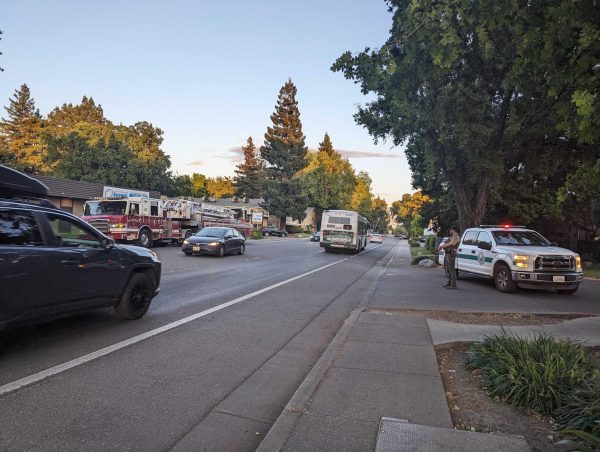The Voices That Echo
His face smudged with dirt as his back pressed against the cold brick, he tucked his torn jacket around himself as he snuggled into the cold cracked concrete. My friend, Hunter and I had previously seen the man shuffling on a blanket, his shoe a barren rubber flap. We followed and found him huddled under a cold drab overhang of an abandoned building. He eyed us with suspicion.
“Hi,” we said. “Hello,” he mumbled, brown eyes darting between the two of us. “Is it alright if we buy you shoes?” Hunter asked. “Yeah, I’ll be waiting here,” the man said. Upon returning from our Costco trip with food and shoes, his eyes brightened. He blinked back tears as he took the box from us carefully. The man’s joy soon faded as a shadow crossed his face.
“Do you hear that?” he said. “Hear what?” we asked. “The voices, that hissing,” he replied. There was only silence. His demeanor changed as he started spitting out lines in rapid succession. Compulsively telling us how he met Michael Jackson in prison and saved the President. He was schizophrenic.
“We used to see quite a few people,” said PR specialist of Iversen Wellness and Recovery Center Denise Peterson. “A good third of the people we saw were homeless before the pandemic.”
The center was designed to help those with mental illness develop skills needed for everyday life. The day ranges from various workshops to crafts. Iversen Wellness and Recovery Center, thanks to the Mental Health Services Act, provides free counseling and help for the community’s mentally ill.
“Most of the people who come here became regulars,” Peterson said. “Before the pandemic there were approximately 250 people per month that would enter the facility. Ninety of those would come once a month, and 30 would come in at least 15 times over the course of the month.”
Due to the pandemic, membership has dropped and funding now faces a serious deficit. “You have to look at what is going on in our community. Because of the pandemic, we have actually lost funding this year,” Peterson said. “We are talking in the millions.”
In January, the governor planned a new state approach to addressing homelessness. He proposed that $750 million be allocated to California Access to Housing and Services (CAAHS), which he established through an executive order within the Department of Social Services. “The administration indicated that the primary goal of the fund would be to help alleviate street-based homeless and increase the state’s number of housing units,” according to the Legislative Analyst’s Office.
- $50 million to address immediate housing needs through project Roomkey
- $100 million to local entities to help support their homeless populations.
- $800 million for Project Roomkey and related Services
- $300 million to for one time continuation of HHAP program
- $500 million increase to expand low-income housing tax credit
- $331 million from national mortgage settlement
Yet all of these plans were interrupted in the midst of the pandemic. In March, the governor withdrew his proposal to CAAHS Fund as part of the May Revision.
But what does this mean for the mentally ill?
“We had a crisis stabilization unit,” counselor at Butte County Behavioral Health Mobile Crisis Unit, Carey Candace said. “It was a major asset to have. It gave people a place to stay … while awaiting to go to a psychiatric facility. We can no longer hold people overnight or provide meals. We can’t provide that care like we used to.”
The pressure of the pandemic weighs heavily on those struggling to make ends meet with mental illness. As Peterson illustrated, many aren’t able to work on disability. Most live on less than $900 a month. In addition many of the homeless deal with the traumatic experience of living on the streets.
“Who knows how many homeless we will see with the backlog of rent,” Peterson said. According to StreetsTeam, approximately 10% of the homeless population struggles with mental illness.
Due to the highly nomadic nature of homelessness, the governor has introduced a project known as Project Roomkey. Established in March, 2020, it’s purpose is to provide shelter for homeless individuals who are recovering from COVID-19 or have been exposed to COVID-19. It provides them a place to safely recover and quarantine outside of a hospital setting. It’s a safe haven for those who experience medical complications that have increased risk of becoming infected. But even with these efforts, some believe it simply isn’t enough.
“Sheltering has been an issue,” Candace said. “Our country doesn’t have a lot of shelters as it is.” According to Candace, it has been exceedingly difficult for many of the local homeless population to get into these housing programs. They require extensive COVID-19 screening before being able to be admitted into facilities.
The homeless aren’t the only ones struggling to stay afloat, many staff members both in Iversen Wellness Center and Butte Behavioral Center are hard pressed for resources. Staff is spread thin and often overworked to make up for the many lost programs. But there is hope.
Currently, the Iversen Wellness Center has enough to fund their staff and have been working through the virtual world of Zoom. “We do the best we can with what we have,” Peterson said.
The Butte Behavioral Health Center and Iversen Wellness Center continue to do what they can with the limited resources available to them. Like the man I had met on the street, the future of the homeless and mentally ill population remains uncertain.
Mary Cron can be reached at [email protected]








